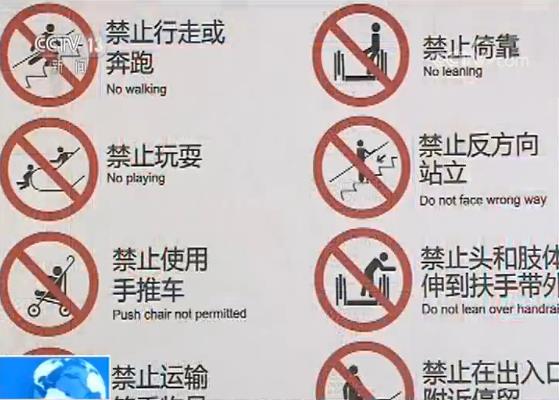CCTV News:In the past few days, Shanghai Metro has issued the "latest version of escalator riding instructions", which has aroused heated discussion. The biggest change is — — The previous advocacy of "walking left and standing right" was cancelled and replaced by "no walking and running while taking the escalator", and this "new ban" ranks first among the eight "bans", and its importance can be imagined. "No walking and running" has become the first rule of taking stairs, so the question will follow. Is the "walking left and standing right" advocated before out of date? What is the reason for this change?

The reporter saw at Nanjing West Road Station of Shanghai Metro Line 2 that there are seven escalators with new version of the instructions for taking the escalator, the first one is "No walking or running". However, many pedestrians still take the stairs according to their original habits.
However, there are different voices in the society against "going left and standing right". Previously, "standing on the right and rushing on the left" was considered as a civilized expression of taking the escalator, which not only facilitated many pedestrians who were in a hurry by taking the escalator, but also maintained the traffic order to a certain extent.

From the point of view of safety, the step height of escalator is quite different from that of stairs. According to the current national standards, the step height of escalators is generally 21cm, and the maximum height should not be greater than 24cm, which is 13 cm-18 cm higher than the design height required for stairs in public places; In addition, according to the regulations, the step depth of escalators should not be less than 38cm, which is far higher than the national minimum requirement for the step width of ordinary stairs of 22cm. Therefore, if people walk on the escalator, it is easy to step empty or stumble, and it is easy to bump into other passengers on the escalator during walking, resulting in accidents.
In addition, the speed of elevators in shopping malls is generally 0.5 m/s, while the speed of elevators in subways is a little faster, about 0.65-0.7 m/s, which belongs to "high-speed elevators". If someone gets up and down in a hurry, it is easy to "take a big piece" once they fall or have an emergency. Especially passengers who are dragging their luggage in a hurry are more likely to cause danger.
There are some historical reasons for the emergence of "walking left and standing right".
Britain was the first country to put forward the idea of "standing on the right and passing on the left" on escalators. In 2008 and before the Shanghai World Expo, China also advocated the escalator method of "walking left and standing right". In 2015, Wuhan also proposed to promote this civilized escalator method. However, with the passage of time, the suggestion of "standing on the right and rushing on the left" was gradually cancelled by many cities.

Like Nanjing and Shanghai, Guangzhou does not advocate "going left and standing right". In August last year (2018), Guangzhou Metro Group announced that it did not advocate "standing on the right side and passing on the left side" on the elevator. The main consideration was the safety and mechanical wear of the elevator. Previously, Beijing West Railway Station also made it clear that passengers were not advised to "stand left and right" when taking the escalator, but hoped that passengers would "stand firm and help well". Hong Kong advocated "walk left and stand right" earlier, because as an earlier subway city, there were only elevators without stairs in the subway, so as to leave a passage for pedestrians in a hurry and special circumstances. However, since 2010, Hong Kong has no longer advocated this line of work, and instead it has also advocated passengers to "stand firm and help".
关于作者